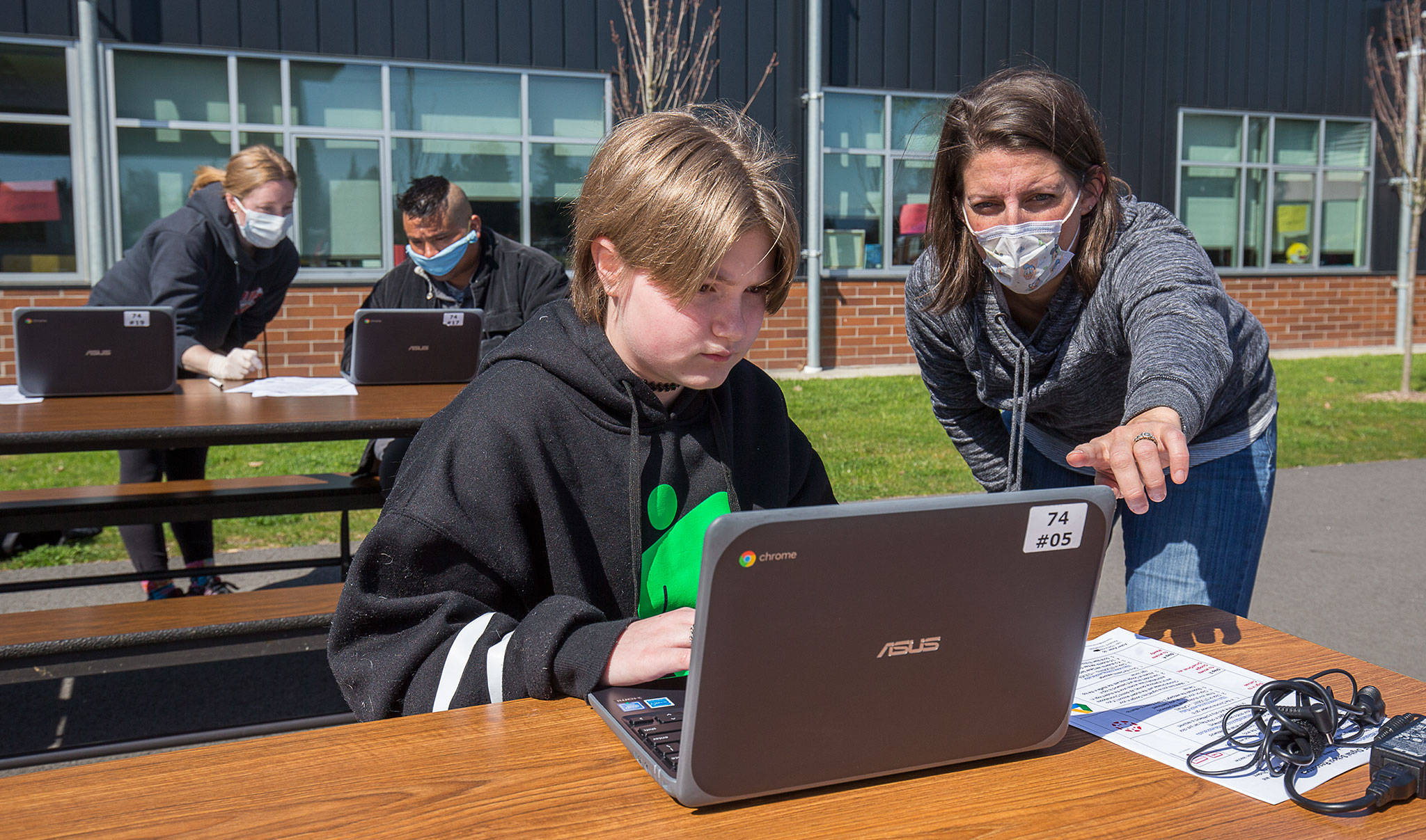By The Herald Editorial Board
Everyone is feeling the fatigue from fighting covid-19.
Just as we were allowed some hope with news of recent vaccine candidates that might begin distribution in a matter of months, came the recognition that rates of infections were growing quickly in the nation, state and our own county. And that news was followed by an unwelcome return of restrictions for restaurants and retail shops.
That frustration is especially felt by students, parents and educators as all involved have struggled to meet the challenges of online classes or, for some, a hybrid schedule of distance learning and in-school classroom time.
While some districts, including the county’s largest — Everett and Edmonds — have stuck with remote learning to end the last school year and begin this school year, others in the county have prepared safety plans and rolled out hybrid schedules for younger students and some special education students. That was the plan being followed by the Monroe School District, which had already brought back kindergarten and special education students to classrooms and had hoped to begin a hybrid model this week for its first-grade students. Using two co-horts of first-graders, students would have attended two days a week at school, while attending classes remotely for three days.
Initially, however, that plan met opposition from the district’s teachers and its union, especially as covid case counts had increased exponentially, a rate that the county’s top health official described as “explosive.”
On Monday, with representatives for teachers and the school district unable to reach an agreement that would bring first-graders back to class, district Superintendent Justin Blasko sent a letter to teachers warning that their refusal to report to classrooms, as part of their contract, could result in “disciplinary action up to and including termination.”
A teachers union official labeled the threat of firings as “bullying and intimidation,” and some parents protested in front of district offices on Monday.
To its credit, the district and its school board have since stepped back from that threat and announced it would pause plans for first-graders’ return to classrooms.
“We have heard the concerns of our staff and families and are pausing in response to these concerns,” a statement on the district’s website announced Thursday. “We want to assure you that your MSD Board of Directors is committed to providing your students with the best education possible in a safe and healthy learning environment. We are committed to working with all of our labor groups to ensure confidence in our safety measures and practices during this ongoing pandemic.”
While the tone of Monday’s letter was unfortunate — and likely would have been unhelpful in fostering an agreement between the district and its teachers — the district’s and school board’s desire — and even its urgency — to begin to bring students back to class is laudable. Few will argue against the idea that all students are best served when they can learn in a classroom setting that makes the most of the skills of teachers and other educators and the resources that are available in schools and classrooms.
But that setting must also ensure the safety of students, teachers and school staff, and that of the families that they all return to each day.
It’s worth noting that the district had successfully welcomed back kindergarten and special education students and had seen only one confirmed and one suspected report of an infection involving students. In both cases, those classes were quarantined, no further outbreaks occurred, and students returned to classrooms.
But that success was not certain to continue during the pandemic’s current environment.
The district’s plans to bring back elementary students were a victim of timing. Recognizing that it had developed a safety plan guided by recommendations from the state and local public health officials and the state superintendent’s office, those plans collided with infection rates in the county — and in the Monroe community — that had reached highs exceeding what was seen locally during an initial surge in March and April, and a second in June and July.
The most recent two-week rolling average of covid-19 cases in the county — as reported by the Snohomish Health District — is now more than 280 per 100,000 people, far above the peaks of 129 in March and 96 in July. The state’s guidance on when it’s safe to allow elementary students back to classrooms allows for no more than 75 cases per 100,000. Monroe, itself, is seeing a rate of more than 150 cases per 100,000.
The county, as a whole, should appreciate the work being done by smaller districts, such as Monroe, to return students to the classroom. Those districts can show what steps are necessary and what success in possible in continuing students’ education in a safe manner. But those safety plans require the recognition that even the most meticulous measures must take current conditions — such as a devastating surge that is requiring widespread restrictions — into account.
Talk to us
> Give us your news tips.
> Send us a letter to the editor.
> More Herald contact information.

























